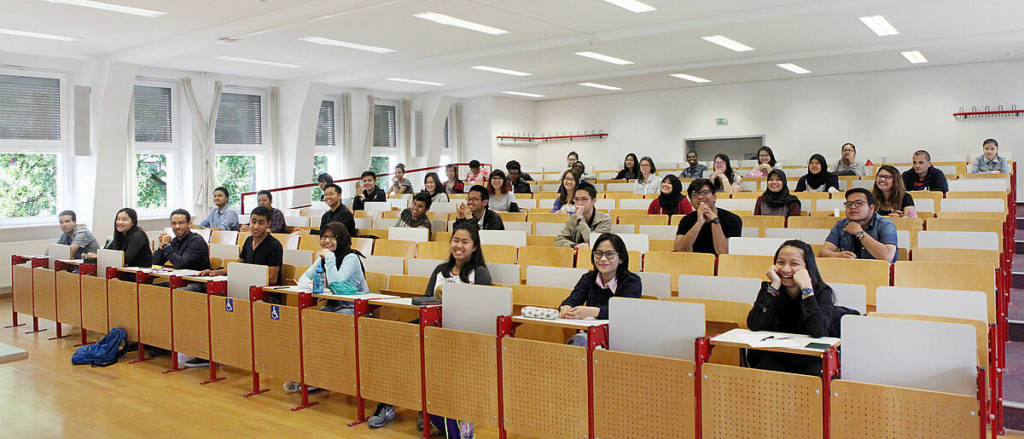
When considering higher education, one of the biggest questions prospective students face is whether to attend a traditional university or a university of applied sciences. These two types of institutions have distinct approaches to education, and understanding their differences can help students make informed decisions about their academic futures. This article aims to provide a detailed, SEO-friendly comparison between universities and universities of applied sciences, covering aspects such as academic focus, degree offerings, teaching methods, career prospects, and more.
What is a University?
A university is a higher education institution that offers undergraduate and postgraduate degrees in a wide variety of academic disciplines. It is known for its theoretical and research-oriented approach to education. Universities are often categorized into different faculties, such as the Faculty of Science, the Faculty of Humanities, the Faculty of Social Sciences, and the Faculty of Engineering, among others.
Focus on Research and Theory
One of the most significant features of universities is their focus on research. Students at universities are often required to engage in deep theoretical study, and their education is typically more focused on acquiring knowledge rather than applying it directly to practical situations. Universities emphasize critical thinking, abstract reasoning, and scholarly research. Professors at universities often conduct independent research alongside their teaching responsibilities, contributing to academic knowledge and innovation in various fields.
Academic Degrees Offered
Universities typically offer a wide range of academic degrees, including:
- Bachelor’s degrees (BA, BSc, etc.): Usually a three to four-year program where students gain foundational knowledge in their chosen field.
- Master’s degrees (MA, MSc, etc.): A postgraduate degree that usually takes one to two years to complete and involves more specialized study in a particular subject.
- Doctoral degrees (PhD): The highest level of academic degree, focusing on original research that contributes new knowledge to the field.
Teaching Methods
At universities, teaching is often carried out through lectures, seminars, and tutorials. Theoretical discussions are common, and students are expected to read academic papers, complete assignments, and write research-based essays. Exams are often essay-based, designed to test the students’ understanding of complex theories and concepts. The teaching style at universities fosters independence, as students are expected to engage in self-directed study, research, and critical analysis.
What is a University of Applied Sciences?
A University of Applied Sciences (UAS), on the other hand, is a higher education institution that focuses on practical, skills-based education. These institutions are sometimes known as Polytechnics or Institutes of Technology in certain countries. The primary objective of a UAS is to prepare students for specific professions by providing them with practical skills and industry-relevant knowledge.
Focus on Practical Education
Unlike traditional universities, universities of applied sciences emphasize hands-on learning and direct application of knowledge in real-world settings. The curricula at UAS are often designed in collaboration with industries and businesses, ensuring that students are trained to meet the demands of the job market. Practical training, internships, and work placements are integral parts of the education, providing students with the opportunity to apply what they’ve learned in real-life situations.
Professional Degrees Offered
The degrees offered at universities of applied sciences are generally more vocational and professional in nature. Some common degrees include:
- Bachelor’s degrees (BA, BSc): Similar to those at traditional universities but with a focus on practical skills and applications. The duration is typically three to four years.
- Master’s degrees (MA, MSc): Postgraduate programs that build on practical skills and focus on advanced industry-specific knowledge. These programs usually take one to two years to complete.
Doctoral degrees are not commonly offered at universities of applied sciences, though some institutions may offer applied doctoral programs in collaboration with traditional universities.
Teaching Methods
The teaching style at a university of applied sciences is significantly different from that of a traditional university. Courses are more practice-oriented, and students spend a considerable amount of time working on projects, participating in group work, and completing internships. Learning is often experiential, with case studies, simulations, and hands-on tasks designed to prepare students for the professional world. Assessments typically include practical exams, presentations, and project work rather than theoretical essays.
Key Differences Between Universities and Universities of Applied Sciences
Understanding the key differences between universities and universities of applied sciences can help prospective students decide which type of institution best aligns with their academic and career goals.
1. Academic vs. Practical Focus
- Universities: The focus is on academic knowledge, theory, and research. Students are encouraged to explore complex concepts, engage in critical thinking, and contribute to academic discussions. The education at universities is more abstract and research-driven, making it suitable for students interested in pursuing careers in academia or research-intensive fields.
- Universities of Applied Sciences: The focus is on practical skills and real-world applications. Courses are designed to equip students with the technical and vocational skills needed for specific industries. This makes UAS a better option for students who want to enter the workforce immediately after graduation and are looking for industry-relevant training.
2. Career Prospects
- Universities: Graduates from universities are often better suited for careers that require deep academic knowledge and research skills, such as those in academia, scientific research, law, or certain types of public policy. However, depending on the field, university graduates may need additional training or experience to transition into professional roles in the private sector.
- Universities of Applied Sciences: Graduates from UAS programs are highly sought after by employers due to their practical skills and industry experience. The programs are often designed in close cooperation with businesses, ensuring that graduates are ready to hit the ground running in their chosen careers. Common fields for UAS graduates include engineering, business, healthcare, and IT.
3. Program Structure
- Universities: Programs at traditional universities tend to be more flexible and offer a broad range of subjects. This allows students to tailor their studies to their interests and explore various fields before deciding on a specific career path. However, this flexibility also means that students may take longer to complete their studies.
- Universities of Applied Sciences: Programs at UAS are more structured and focused on specific professions. There is less room for academic exploration, but this focused approach ensures that students acquire the exact skills needed for their chosen career. Programs are often shorter and more intensive, allowing students to enter the workforce more quickly.
4. International Opportunities
- Universities: Due to their academic reputation and focus on research, universities tend to have strong international connections. Students often have opportunities to participate in exchange programs, attend international conferences, and collaborate with scholars from around the world. This is especially beneficial for students aiming for global careers or those interested in continuing their education abroad.
- Universities of Applied Sciences: While UAS institutions may have fewer international collaborations, they often offer strong connections with industry partners worldwide. This can provide students with opportunities to complete internships or work placements abroad, particularly in fields such as business, engineering, and technology.
Which One is Right for You?
Deciding between a traditional university and a university of applied sciences depends on your career goals, learning preferences, and the type of education you’re looking for.
1. Academic Interests
If you’re passionate about theoretical study, research, and the pursuit of academic knowledge, a traditional university might be the right choice for you. Universities are ideal for students who wish to engage in deep discussions, conduct research, and pursue careers in fields that require strong theoretical foundations.
2. Career-Oriented Approach
If your primary goal is to gain practical skills and enter the workforce as quickly as possible, a university of applied sciences may be a better fit. UAS programs are designed to prepare students for specific industries, and the hands-on experience you gain will make you more employable upon graduation.
3. Long-Term Goals
Consider your long-term career aspirations. If you plan to work in research, academia, or any field that requires a PhD, a traditional university will offer the foundation you need. However, if you want to enter a profession like engineering, business, or healthcare right after earning your bachelor’s degree, a UAS can provide the practical training required for immediate employment.
Examples of Countries Where the Distinction is Significant
The distinction between universities and universities of applied sciences is more prominent in certain countries, particularly in Europe. For example:
- Germany: In Germany, universities (Universitäten) are more focused on theoretical education and research, while universities of applied sciences (Fachhochschulen) are geared toward practical, hands-on learning.
- The Netherlands: Similar to Germany, the Netherlands has both universities (Universiteiten) and universities of applied sciences (Hogescholen). The latter focuses more on professional training and is closely linked with the business community.
- Finland: In Finland, the distinction is also clear. Traditional universities focus on research, while universities of applied sciences (Ammattikorkeakoulut) are practice-oriented.
Conclusion
Both universities and universities of applied sciences offer valuable educational experiences, but they cater to different types of students and career paths. If you’re looking for a broad, theoretical education with an emphasis on research, a traditional university may be the best option for you. However, if you prefer hands-on learning with a clear path to a professional career, a university of applied sciences could be a better fit. Ultimately, the choice between these two types of institutions depends on your personal and professional goals.
By understanding the key differences between these two educational paths, you can make a more informed decision that will set you on the right track for your future.


